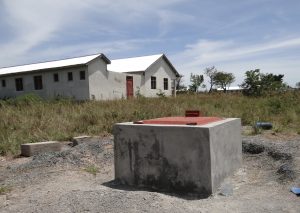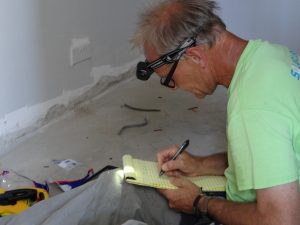At GEC, we make no secret of the fact that we believe meaningful change and sustainable development is the product of dynamic, mutually constitutive collaboration. Heck, it’s in our name. But exactly how those collaborative relationships play out and what has come from some of our most productive alliances is an aspect of our work we want to make more apparent. Sometimes, it’s easy to forget that people outside our organization don’t have an intuitive sense of what it is—or how it is—we “do.”
In a recent blog entry, we turned the spotlight on our core partner in the Kitenga Village Project—the Immaculate Heart Sisters of Africa (IHSA). With them, we are working closely to bring to fruition a school for girls in a remote area of Tanzania that will open its doors to students in just two weeks. Without a doubt, our partnership with the IHSA is most critical. Without them, their vision, their knowledge of and relationship with the local community, their experience as school administrators, and their passion for empowering girls and women, the project would cease to exist.
But that does not mean we aren’t indebted to the work of others. A project as large in scope as Kitenga, which over time involves building out an entire campus and rendering it fully operational for up to 1,500 girls, is a complex and expensive undertaking. And it would be foolhardy not to rely on the resources and expertise of other interested and passionate parties. Case in point: the wonderful Buffalo Sunrise Rotary Club and Solar Liberty Foundation, both of which were involved in the Kitenga project from its earliest stages.
Before GEC was even invited by IHSA to become a core partner in the Kitenga Village Project, Buffalo Sunrise Rotary had led the fundraising effort to build the site’s first deep bore well, which meant for the first time IHSA had ready access to clean water for their programs. Eventually that deep bore well became solar pumped so stored water could be distributed to the health clinic and kindergarten program. For its part, Solar Liberty Foundation had committed from the outset to install solar electrification systems at the site—they just needed buildings to connect them to!
When GEC entered the picture, we took on the role of active liaison to facilitate both Sunrise Rotary’s and Solar Liberty’s ongoing commitment to Kitenga’s water and energy needs, respectively, and to help ensure the efficiency of those partnerships. In practice, that has meant serving as a mediary between IHSA and both groups and our regular presence at the Kitenga site and familiarity with the realities on the ground has rendered us in a good position to generate ideas for the groups’ water and electricity initiatives that might have otherwise gone unconsidered.
The results of our working relationships have been tremendous. During infrastructure planning, when it was determined that the library needed toilets, the science lab needed running water for its sinks, and the dormitory needed showers, Sunrise Rotary took on the challenge of fundraising for a second deep bore well. With the support of other local Rotaries, they were successful and a second well was dug in 2016. Now that water needs to get distributed! We are working with Sunrise Rotary to make that a reality. That has meant commissioning our builder to conduct a land survey to figure out how water might most efficiently be pumped uphill, stored, and fed to the campus’s buildings by way of gravity, and working with the involved entities to hammer out a design. Sunrise Rotary is on board to make sure the system gets funded.
As for Solar Liberty Foundation, its largest contribution to date is materializing right now as its container of top-of-the-line panels and batteries will soon leave its Tanzanian port and be on route by road to Kitenga for installation. But even before then, Solar Liberty worked closely with GEC to ensure the buildings’ roofs were designed to withstand the panels, and sent an electrician to Tanzania in advance to plan the system, meet with our builder, and to identify the resources on the ground they would need to make the install a success.
Our partnerships with Sunrise Rotary and Solar Liberty have been different than that with IHSA, but that is part and parcel to our operational model: No two partnerships will ever be the same; rather, we adapt them to fit with the involved parties and particular situation. The constant? Our commitment to efficiency, respectful collaboration, and our goal of undergirding the projects we become involved in with a secure and impassioned network of resource-bearing organizations and individuals. The health of our projects and the girls we serve depend on it.

